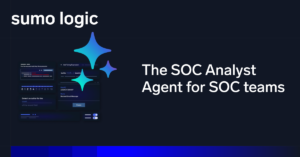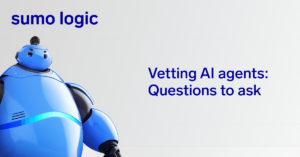
Every time someone asks me about building their AI policy, I die a little inside. Not because it’s a bad question, but because my answer is always the same: “Can we not build it off pure fear for once?” Most people don’t understand how AI architecture works, so their first instinct is to panic.
And, we’ve seen this movie before: cloud, mobile, bring your own device (BYOD). The second something new shows up, security turns into the Department of No, telling teams, “You can’t use ChatGPT. You might leak something.”
Meanwhile, that same engineer just pasted a customer ID into a public GitHub issue. Good talk.
Respond faster with Sumo Logic Dojo AI
Cut through the noise, detect threats faster, and resolve issues before they disrupt your operations.
The fear reflex doesn’t scale
Fear is not a strategy. Saying “no AI allowed” doesn’t reduce risk. It just guarantees:
- Shadow IT (people will use it anyway)
- Inconsistency (Microsoft Copilot allowed but ChatGPT banned?)
- Loss of trust in security (the most important part of your job)
If we want to enable safe and sane AI use in our orgs, we need to move from knee-jerk restrictions to threat-informed decisions.
Policies without threat models are just paranoia
A real security policy should answer:
- What are we protecting?
- From whom?
- And how can it fail?
That’s threat modeling. And it works just fine for AI, too.
For example, let’s say the dev team wants to use ChatGPT for summarizing support cases.
- Asset: Internal support docs
- Threat: Prompt injection, leakage, hallucination
- Impact: Leaked workflow, bad customer advice
- Controls: Templates, no PII, audit logs
You now have a reason to say “Yes—with guardrails,” instead of “No—because vibes.”
A simple framework that doesn’t suck
To maintain secure AI usage throughout your organization, start by following these steps:
- Inventory and discovery: Find all AI use (shadow or not). Devs, marketing, HR, legal—trust me, it’s everywhere.
- Data classification: Know what’s sensitive. PII? Source code? Strategy docs?
- Allow /monitor /deny zones: Not everything needs to be banned. Use a tiered model to balance risk and productivity.
- Guardrails and logging: Prompt filters, output validation, session recording. AI gateways exist—use them.
- Enable, don’t obstruct: Work with teams. “No” is not a long-term policy.
Five policy areas you’re probably ignoring
- Shadow fine-tuning: Anyone can fine-tune an LLaMA model on internal data now. Good luck untraining that.
- Prompt IP leakage: Your prompt is your logic. Don’t let your engineers paste it into a Discord group.
- Browser extensions: Jasper, Rewind, Merlin—these are exfil tools with fancy branding.
- AI-written legal docs: Whoops, you just hallucinated a warranty clause.
- Autonomous agents: That Zapier+GPT setup your PM made is now emailing customers. Cool cool cool.
Each of these needs a threat model, a risk matrix, and a policy stance. We’ve made a sample matrix for you if math makes it feel more official.
| Area | Likelihood | Impact | Risk level |
| Shadow fine-tuning | 4 | 5 | 20 |
| Prompt engineering IP | 3 | 4 | 12 |
| AI browser extensions | 5 | 4 | 20 |
| AI in legal/compliance | 3 | 5 | 15 |
| Autonomous AI agents | 4 | 5 | 20 |
Visualize or die trying
To keep it dead simple, here’s a generic threat modeling diagram:
- Actor
- Threat
- Asset
- Impact
- Controls
Stick those on a whiteboard and connect the dots. It works. Bonus points if you bring in people outside of security (Dev, GTM, etc.) so you can build bridges and have a more diverse view of the problem.
Final take
AI policy is not a yes/no question.
It’s figuring out:
- What’s the use case?
- What’s the risk?
- Can we put controls in place?
Security isn’t here to be the morality police. Our job is to enable the business safely.
So, stop blocking everything. Start modeling threats. And maybe, just maybe, people will stop hiding their AI usage from you.
AI policy is only half the battle. Understand the risk landscape behind AI data privacy.




